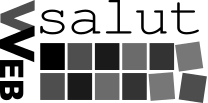Minimalist web design
Minimalist web design is favored by many designers and users for several compelling reasons:
Clarity and Focus: Minimalist designs prioritize essential elements, making it easier for users to understand the content and navigate the site without distractions. This results in a cleaner and more focused user experience.
Simplicity: Minimalist designs strip away unnecessary elements, reducing visual clutter and cognitive load. This simplicity helps users quickly grasp the purpose of the website and find the information they need.
Faster Loading Times: With fewer elements to load, minimalist websites often have faster loading times. This is essential for providing a smooth user experience, especially on mobile devices and in areas with slower internet connections.
Mobile Responsiveness: Minimalist designs naturally lend themselves to responsive layouts, ensuring that the website looks and functions well across various screen sizes and devices.
Aesthetics and Elegance: The simplicity of minimalist design can convey a sense of elegance and sophistication. By carefully choosing fonts, colors, and whitespace, designers can create a visually appealing and harmonious look.
User-Centered Design: Minimalist design puts the user at the forefront. By focusing on user needs and goals, designers can create interfaces that are intuitive and user-friendly.
Branding and Memorability: Minimalist design often relies on strong visual elements, such as logos and distinct typography. These elements can help with brand recognition and make the website more memorable.
Ease of Navigation: With fewer elements to navigate, users can easily find what they're looking for. Clear navigation menus and calls to action contribute to a seamless user experience.
Universal Appeal: Minimalist design tends to have a broad appeal because it avoids excessive decoration and clutter, which can be off-putting to some users. This makes it suitable for a wide range of audiences.
Timelessness: Minimalist designs often have a timeless quality. Trends in web design come and go, but a well-executed minimalist design can remain relevant and effective for years.
Accessibility: Minimalist designs can enhance accessibility by emphasizing legible typography, clear color contrasts, and straightforward navigation, making the content more inclusive to users with various needs.
Adaptability: Minimalist designs can adapt to different types of content and purposes. They work well for portfolios, blogs, corporate websites, and various other online platforms.
While minimalist design has many advantages, it's essential to strike a balance. Over-simplification can lead to a lack of information or engagement, so it's crucial to ensure that the necessary content and functionality are present. Ultimately, the choice of design style depends on the goals of the website, the preferences of the target audience, and the brand identity.
Get started on your digital project!
Services
Cross-cultural














 SEAP / SICAP
SEAP / SICAP






